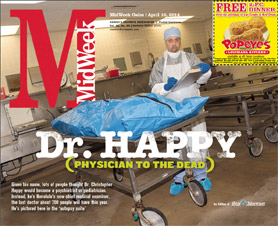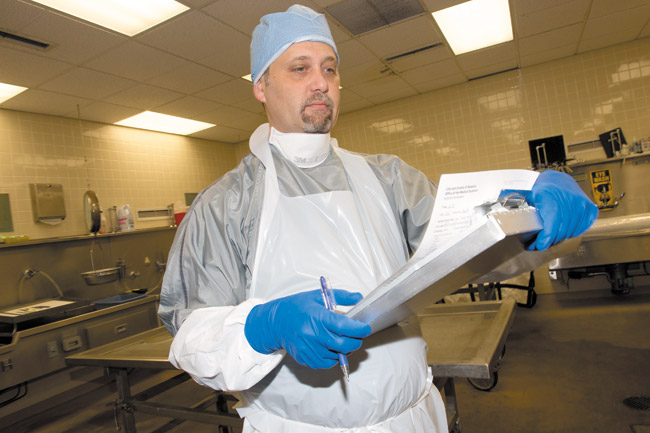Dr. HAPPY (Physician To The Dead)
“The cliché is that I speak for the dead, which I do in court, but I really think I speak for a person’s family,” says Happy, who has a 6-year-old son Duncan. “Helping out a family, I am the last doctor the family talks to in order to understand why someone is dead. In our case, it is often why someone who is young and vibrant is dead, or why someone young never had a chance. That is the hardest part: children.”
Autopsies have been around for thousands of years. There are records of the ancient Greeks performing them, and in many ways the methods have not varied greatly. While the modern surgeon uses lasers and computer images, the pathologist is hands-on, and these days is serving a new role as an auditor for clinicians.
“There is this trend in clinical medicine that, when you lose a patient it is a failure, like with surgeons, and their job is done at that point because they did not succeed in their treatment,” says Happy. “So there is not a lot of follow-up after a death at a hospital. It falls to me to review all the medical records and tell the family what happened.”
The CT images are very revealing, but according to Happy, anywhere from 15 to 30 percent of the time they are wrong, which is why the autopsy is so important.
“People aren’t interested in doing that as a form of quality control anymore,” says Happy. “In the 1940s and ’50s the ultimate gold standard of quality control was an autopsy – people were diagnosed postmortem for all the things they had been diagnosed for before they died to see if it matched up, to see if the doctors were correct. Rates went from 50 percent done in hospitals down to 10 percent today.”
Part investigator, part grief counselor and part real-life Charon the Ferryman, Happy bridges a gap that, as a people, we face only when it lands in our laps. While important, it is often a thankless job, so why would anyone choose do such a thing with their hard-earned medical degree?
“When I was a wee lad, I decided I want to cut up dead people,” says Happy with a wry smile. “No. I went into medical school thinking I would be a neurosurgeon; I ended up being a neuropathologist. When I was in medical school, what interested me was pathology … pathologists are called a doctor’s doctor because usually our diagnoses are for other doctors, not necessarily for the patient.
“I rotated through forensics, and I really liked it. What got me were the stories of how people end up at our office – there are a million ways to die, and those stories really sucked me in, and over time you realize as a forensic pathologist you are more like a family’s or society’s doctor.
“Families that lose someone suddenly often do not get the benefit of a doctor telling them what happened in the hospital. They didn’t have somebody who was there to be cared for a long time, they died suddenly in a car accident. I am the last physician who tells the family what happened. A lot of people say it provides closure.”







